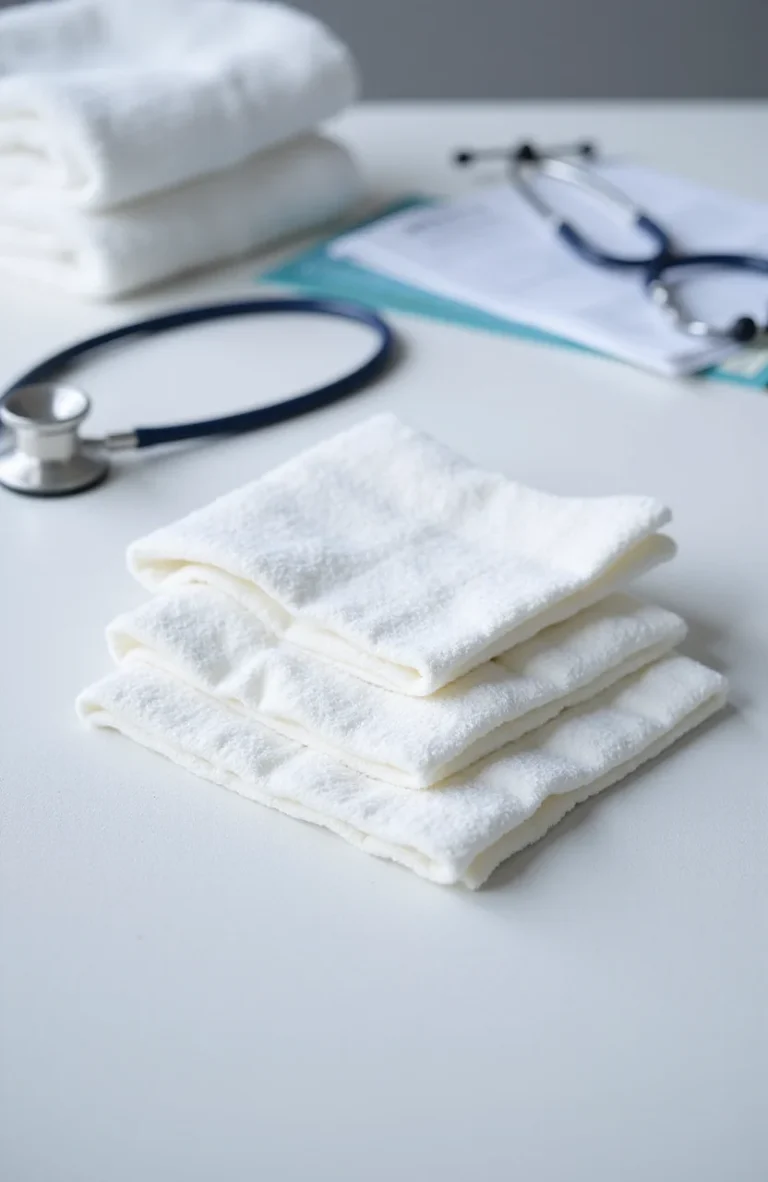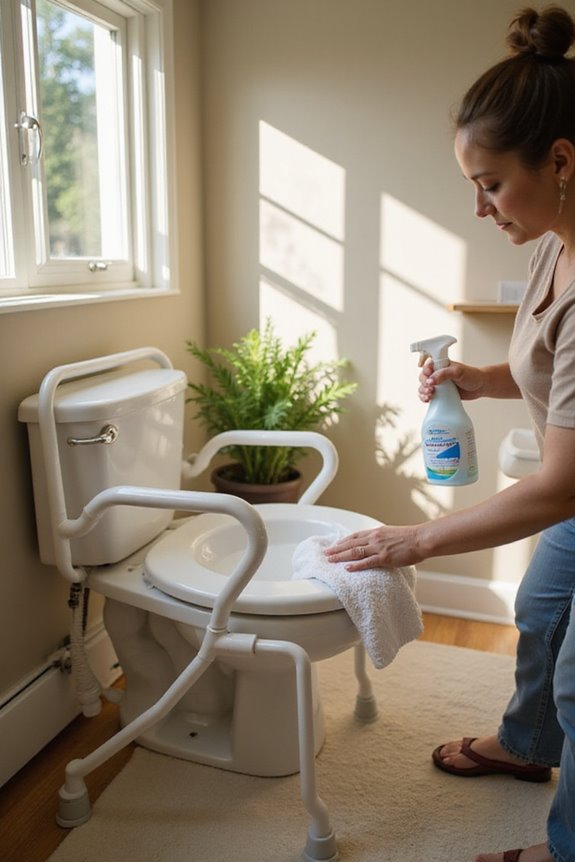Incontinence products can be categorized into reusable and disposable types.
- Cost: Reusables cost $12.99 to $24.95 initially; disposables range from $0.15 to $0.24 per use.
- Environmental Impact: Reusables reduce landfill waste, while disposables take years to decompose.
- Convenience and Comfort: Disposables offer immediate usability, while reusables provide discretion and comfort.
Understanding these distinctions can guide informed choices about incontinence management solutions. Additional insights follow.
Key Takeaways
- Reusable incontinence products are eco-friendly and cost-effective, leading to long-term savings compared to disposable options, which incur ongoing costs.
- Disposable products offer immediate convenience and higher absorbency, making them suitable for individuals with limited mobility or urgent needs.
- Reusables provide comfort and discretion, resembling regular underwear, while disposables are designed for quick replacement and hygiene management.
- Psychological effects of incontinence can be mitigated through supportive environments and open discussions, emphasizing the importance of addressing stigma.
- User satisfaction with both types hinges on absorbency, comfort, and odor control, with features tailored to individual needs and preferences.
Understanding Disposable Incontinence Products
Disposable incontinence products serve a critical function in managing bladder control issues. These items are engineered for convenience, utilizing materials like cotton and polyester to guarantee comfort while providing reliable absorbency. Product innovations, such as breathable backsheets and moisture-wicking inner layers, enhance user experience.
Key types include:
- Bladder Control Pads: Discreet for light leakage.
- Adult Briefs: Suitable for moderate to heavy incontinence.
- Protective Underwear: Resembles regular underwear with absorbent capabilities.
User testimonials indicate satisfaction with odor control features and customizable absorbency levels. The availability of various sizes and styles allows users to find products tailored to their needs. This accessibility fosters a sense of belonging for those managing incontinence challenges, particularly when considering absorbency levels that match individual leakage severity.
Exploring Reusable Incontinence Products
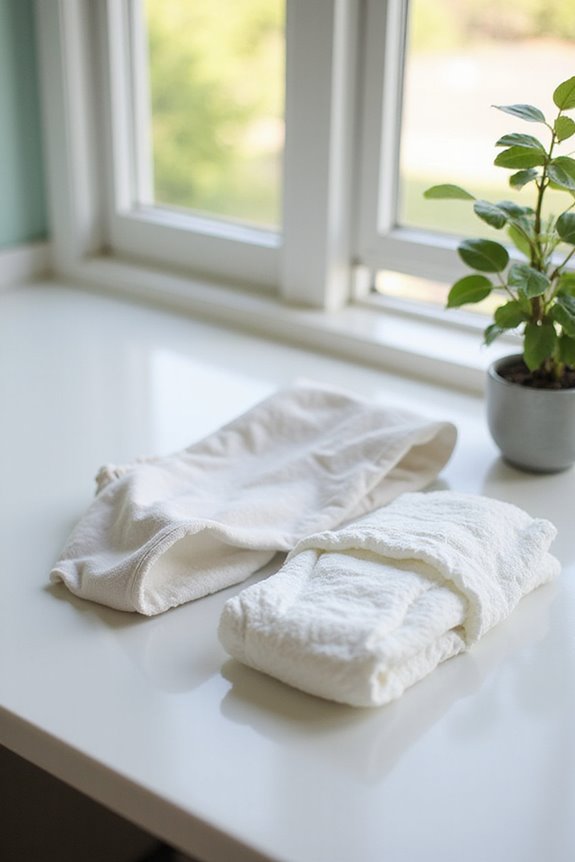
Reusable incontinence products offer a sustainable alternative to their disposable counterparts, providing both environmental and economic benefits.
Environmental Impact
- Considerably reduce landfill waste, promoting sustainability.
- Constructed from eco-friendly, organic, or biodegradable materials.
- Lower daily waste output compared to disposables, which take years to decompose.
- Support a circular use model through multiple washes.
Cost Effectiveness
- Higher initial costs, but more economical over time.
- Can last for months or years with proper care.
- Bulk purchasing options can yield savings.
- Reduced frequency of replacement diminishes long-term expenses.
Comfort and Design
- Made from soft, breathable fabrics like cotton or bamboo.
- Ergonomic shapes and adjustable features enhance user experience.
- Available in various styles tailored to individual needs, including options for adjustable fit to accommodate different body types.
Convenience of Use: Disposable vs. Reusable

When evaluating the convenience of incontinence products, the choice between disposable and reusable options presents distinct advantages and challenges.
Disposables
- Provide immediate usability, minimizing daily maintenance.
- Allow for quick replacement, beneficial for bedridden or elderly patients.
- Typically offer higher absorbency, reducing leak risks.
- Require no washing, simplifying hygiene management.
Reusables
- Mimic normal underwear, enhancing user discretion.
- Use softer materials, promoting comfort and reducing irritation.
- Require careful washing, posing challenges for users with limited mobility.
- Increase potential exposure to bodily fluids during handling.
In caregiver support settings, disposables may be preferred for their ease of use and reduced hygiene concerns, while reusables appeal to environmentally conscious users willing to manage upkeep. Additionally, many disposable products feature advanced technologies that enhance performance and skin dryness, making them a popular choice for those seeking reliable protection.
Cost Analysis: Long-term Implications
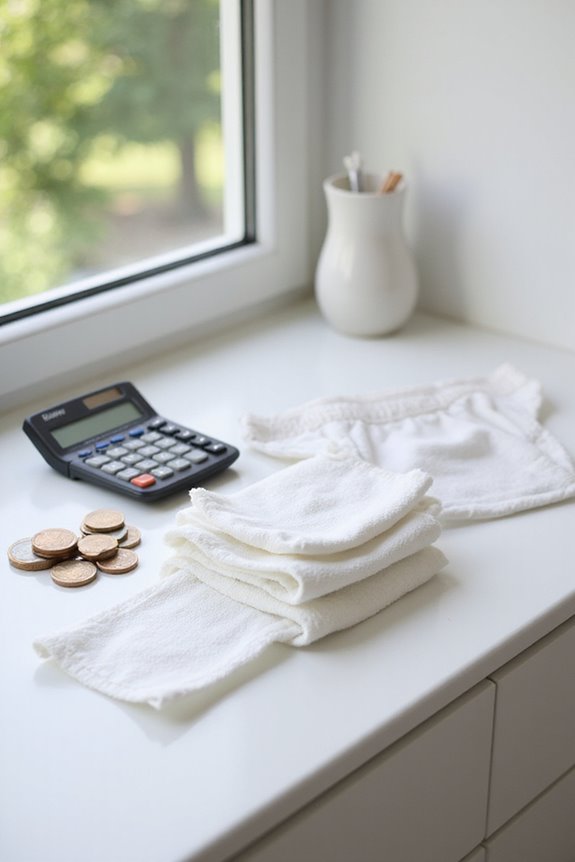
Cost analysis of incontinence products reveals significant long-term implications that can affect consumer choices.
Initial Cost Comparison
- Reusable underwear ranges from $12.99 to $24.95 per unit.
- Disposable pads cost $0.15 to $0.24 each, averaging $10 to $15 per pack.
- Reusable pads may initially cost $20 to $50 but are designed for multiple uses.
Long-Term Savings
- Reusables eliminate constant repurchasing, leading to substantial savings over time.
- After two years, using two pads daily, reusables cost approximately $380.80, versus $392.40 for disposables.
- Additionally, eco-friendly alternatives like reusable diapers help reduce waste while providing reliable protection.
Maintenance Costs
- Laundering expenses are similar for both types but can add to the overall investment analysis.
- Economic feasibility increases with higher durability and lower usage frequency of disposables.
Environmental Considerations of Incontinence Products
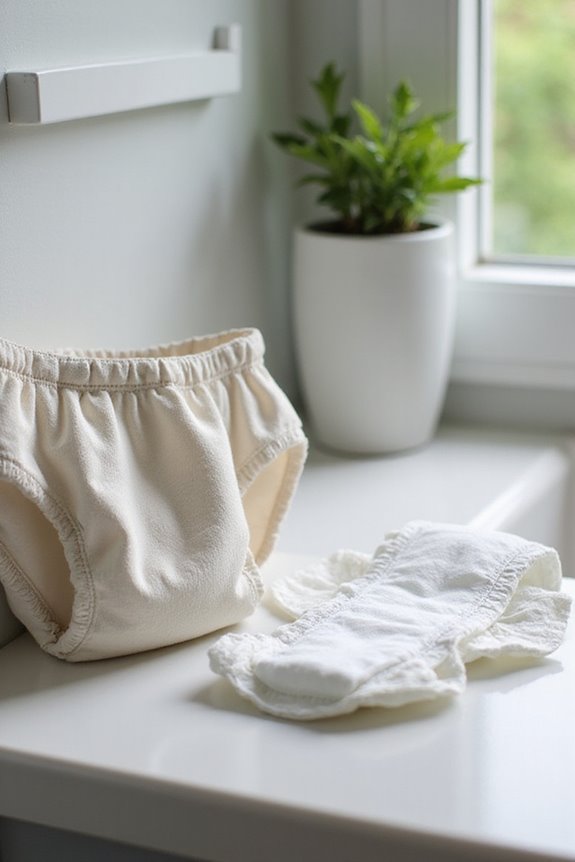
The environmental considerations surrounding incontinence products are critical, particularly given the increasing prevalence of disposable options.
- Disposable adult incontinence products contribute approximately 7% of landfill waste in the U.S., underscoring a significant environmental burden.
- A single product can take up to 500 years to decompose, releasing toxins and greenhouse gases.
- They contain around 20% non-biodegradable materials, complicating waste reduction efforts.
- Manufacturing processes rely heavily on fossil fuels, further increasing their carbon footprint.
Adopting sustainability practices is essential, as predictions indicate that adult incontinence product waste may outpace infant product waste by 2030. Limited recycling options necessitate a shift towards more sustainable alternatives to mitigate environmental impacts and enhance waste management strategies.
Absorbency Levels and Odor Control
Absorbency levels and odor control are critical factors in the selection of incontinence products, impacting user comfort and confidence.
Absorbency Ratings
- Products are rated from 1 to 6, with 1 offering slight protection and 6 providing maximum protection.
- For instance, Abena Abri-form can absorb 108-123 oz., while Tranquility Premium Overnight absorbs 34 oz.
- Options vary from light leakage products to heavy absorbent diapers.
Odor Management
- Many disposable products feature odor-resistant materials, including activated charcoal and antimicrobial agents.
- Reusable products utilize natural fibers to help control odor effectively.
- Regular changing of products is vital to minimize odor and maintain hygiene, as proper sizing is critical to prevent leaks and enhance wearability.
These aspects guarantee that users have suitable options tailored to their individual needs.
Comfort and Discretion in Product Selection
Comfort Factors
- Disposable products utilize advanced moisture-wicking materials, enhancing comfort and reducing skin sensitivity.
- Reusable options often feature softer fabrics but may require more frequent changes to maintain dryness.
- Both types show similar skin comfort levels when properly designed, minimizing irritation. Additionally, high absorbency levels in disposable products can provide enhanced overnight protection.
Discretion and Appearance
- Disposable pull-ons mimic regular underwear, offering a discreet appearance.
- Reusable products can vary in thickness; slimmer options improve discretion.
- Pads and liners are typically chosen for their minimal bulk under clothing.
Conclusion
A well-fitting product that accommodates individual needs is essential for peak comfort and product performance, ensuring both skin health and user confidence.
Psychological Effects of Incontinence Management
Addressing incontinence management extends beyond physical comfort and product choice; it greatly impacts mental health and emotional well-being. The emotional toll of urinary incontinence (UI) includes self-blame, shame, and fear of social judgment, often leading to social isolation.
- Individuals frequently experience anxiety and depression linked to functional loss, with odds ratios indicating a significant increase in psychological distress.
- The social stigma surrounding UI exacerbates feelings of embarrassment, causing many to avoid seeking help or discussing their condition.
- As a result, individuals may withdraw from social interactions, straining relationships and increasing caregiver burden.
Understanding these psychological effects is crucial for fostering supportive environments and encouraging earlier intervention, ultimately improving quality of life for those affected by incontinence.
Frequently Asked Questions
How Do I Choose the Right Size for Incontinence Products?
Choosing the right size for incontinence products can feel like maneuvering through a labyrinth. Accurate size measurement guarantees an impeccable product fit, preventing discomfort and leaks, fostering confidence and belonging in every situation, no matter the challenge.
Can I Use Reusable Products Overnight?
The question of overnight protection highlights varying comfort levels. Many users find that certain reusable products can provide adequate overnight support, enhancing confidence and comfort during sleep, while others may prefer disposables for their convenience and reliability.
Are There Any Skin Sensitivity Concerns With These Products?
Skin sensitivity concerns arise from various product materials, potentially leading to skin irritation. Users often experience discomfort due to chemical exposure and friction, highlighting the importance of selecting products that prioritize skin health and comfort.
What Is the Best Way to Store Reusable Incontinence Products?
In a garden of care, proper storage techniques nurture the blossoms of reusable products. Sheltered in breathable bags and kept dry, these treasures thrive, ensuring longevity and effective product maintenance for those seeking comfort and connection.
How Do I Dispose of Disposable Incontinence Products Properly?
Proper disposal methods for incontinence products involve securely wrapping them to contain odors, placing them in plastic bags, and adhering to local waste management guidelines to guarantee hygiene and discretion while minimizing environmental impact.




